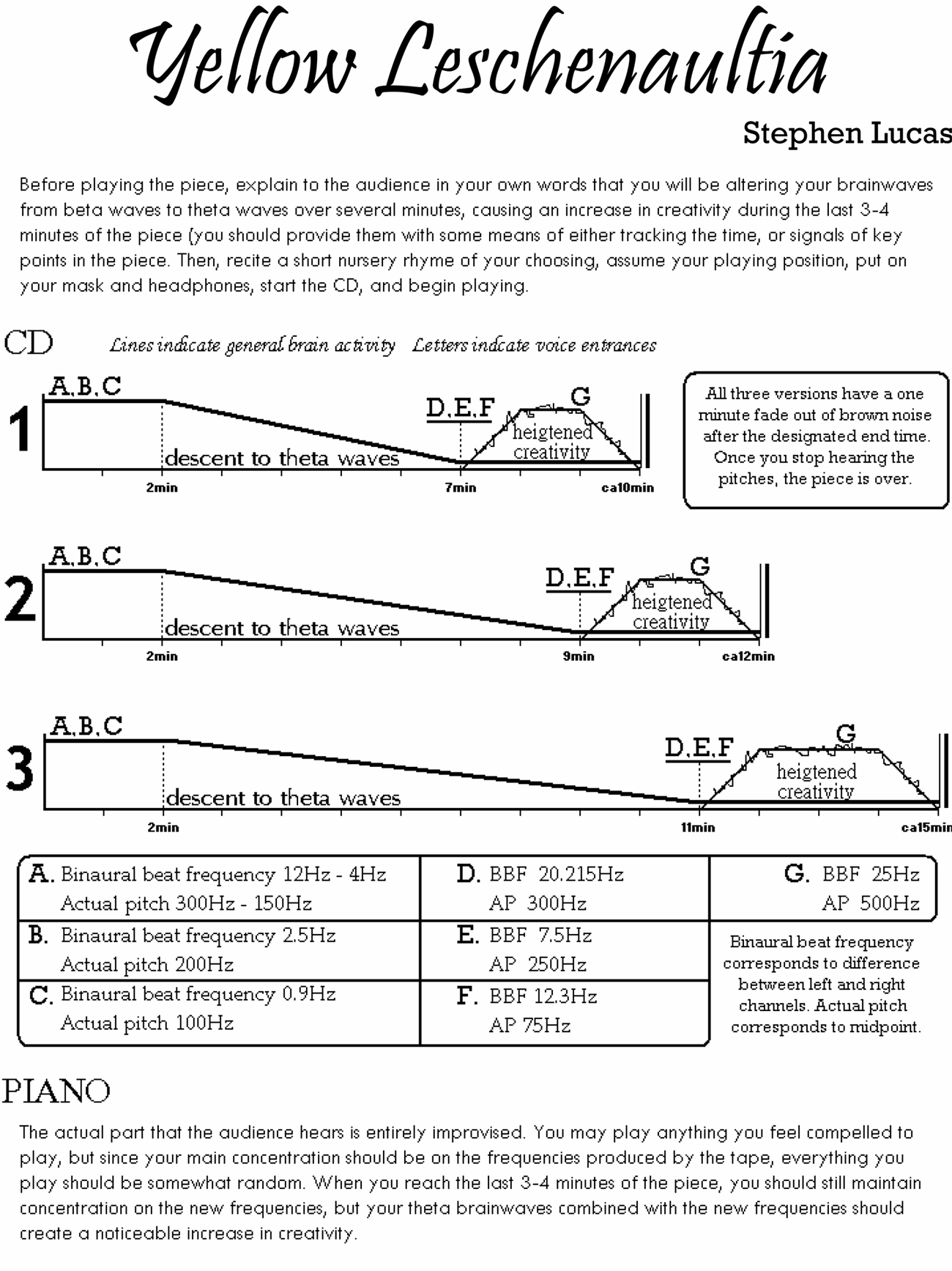Solo Instrument with Brain Wave Entrainment
2004
 This piece was originally intended for solo piano, but could technically be performed by any solo instrument (or potentially a small ensemble). Playing the piano does not require much involvement in terms of breathing, and also requires relatively less body involvement. In order for the brainwave entrainment to be most effective, one must regulate breathing and relax the body, so other instruments may be more difficult to perform properly. Additionally, piano requires relatively less pitch association within one’s mind in terms of random improvisation, so playing another instrument could potentially impair the effect of the binaural beats.
This piece was originally intended for solo piano, but could technically be performed by any solo instrument (or potentially a small ensemble). Playing the piano does not require much involvement in terms of breathing, and also requires relatively less body involvement. In order for the brainwave entrainment to be most effective, one must regulate breathing and relax the body, so other instruments may be more difficult to perform properly. Additionally, piano requires relatively less pitch association within one’s mind in terms of random improvisation, so playing another instrument could potentially impair the effect of the binaural beats.Binaural Beats
The human brain uses electrical vibrations which act at different frequencies corresponding to different states of mind. Measurement of those frequency ranges has shown that there are four main ranges: Delta (0.5-4Hz), which corresponds to deep sleep; Theta (4-8Hz), which occurs both in early stages of sleep and meditation; Alpha (8-14Hz), where the mind is relaxed yet alert; and Beta (14-30Hz), where the mind is very alert and focused. By applying stimuli of different frequencies to the brain, one can cause the brain to match those frequencies, thus affecting states of consciousness. The most convenient form of stimuli is through the ears, but since these frequencies are in the low end of human hearing, one effective way of producing them is through binaural beats. When stereo headphones are used to present (for example) a 400Hzpitch to the left ear and a 410Hz pitch to the right ear, the difference is combined inside the brain, creating a third pitch of 10Hz. This is an effective way of transmitting low frequency stimuli to the brain, allowing someone to alter their brainwaves.
Practice
The piece uses a prerecorded track of pitches, which are meant to alter the performer’s brainwaves via headphones while they improvise on their instrument. For the brainwave entrainment to be successful, you will need practice with the tracks and a willingness for the mind to be altered. The original CD has a three separate tracks of different lengths, but you should practice mostly with track #3 (the longest). The shorter tracks may be more difficult to achieve a result with, but will likely be less tedious for an audience. When listening to the tracks, you should close your eyes, relax your body and mind, and concentrate on the low frequencies being created in your head. As far as the actual playing, you should get to the point where you can improvise randomly through muscle memory without much thought. It will be impossible to divert all attention away from playing, but you must be concentrating mainly on the low frequencies being created inside your brain.